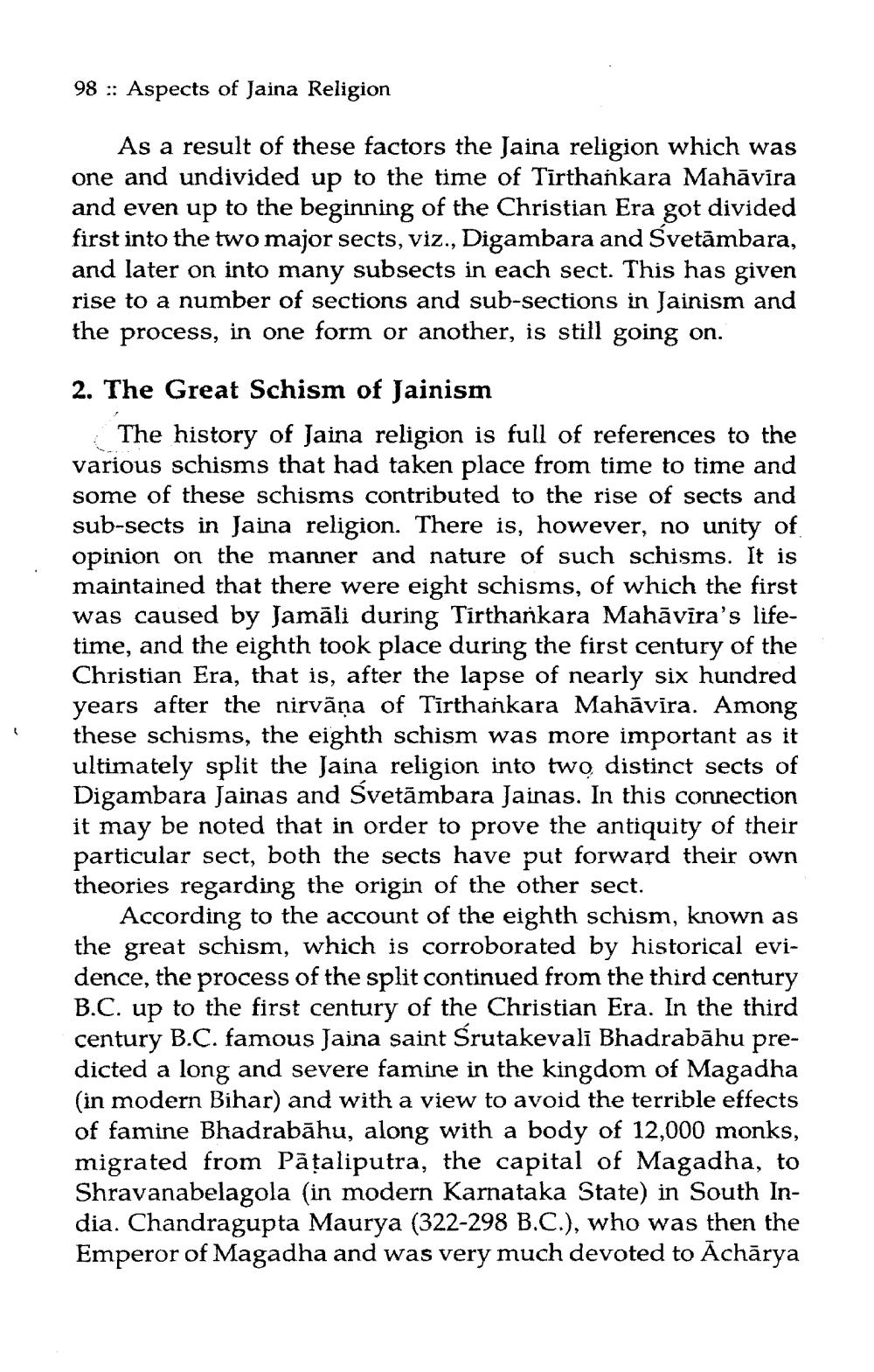________________
98 :: Aspects of Jaina Religion
As a result of these factors the Jaina religion which was one and undivided up to the time of Tīrthankara Mahāvīra and even up to the beginning of the Christian Era got divided first into the two major sects, viz., Digambara and Svetāmbara, and later on into many subsects in each sect. This has given rise to a number of sections and sub-sections in Jainism and the process, in one form or another, is still going on.
2. The Great Schism of Jainism
The history of Jaina religion is full of references to the various schisms that had taken place from time to time and some of these schisms contributed to the rise of sects and sub-sects in Jaina religion. There is, however, no unity of opinion on the manner and nature of such schisms. It is maintained that there were eight schisms, of which the first was caused by Jamāli during Tirthankara Mahāvīra's lifetime, and the eighth took place during the first century of the Christian Era, that is, after the lapse of nearly six hundred years after the nirvāṇa of Tirthankara Mahāvira. Among these schisms, the eighth schism was more important as it ultimately split the Jaina religion into two distinct sects of Digambara Jainas and Svetāmbara Jainas. In this connection it may be noted that in order to prove the antiquity of their particular sect, both the sects have put forward their own theories regarding the origin of the other sect.
According to the account of the eighth schism, known as the great schism, which is corroborated by historical evidence, the process of the split continued from the third century B.C. up to the first century of the Christian Era. In the third century B.C. famous Jaina saint Srutakevali Bhadrabāhu predicted a long and severe famine in the kingdom of Magadha (in modern Bihar) and with a view to avoid the terrible effects of famine Bhadrabāhu, along with a body of 12,000 monks, migrated from Păţaliputra, the capital of Magadha, to Shravanabelagola (in modern Karnataka State) in South India. Chandragupta Maurya (322-298 B.C.), who was then the Emperor of Magadha and was very much devoted to Achārya




